
Following our previous visit to Connecticut-based Newman Architects, we are moving our Meet Your Next Employer series to Bridgehampton, NY this week to explore the work of Oza Sabbeth Architects.
Established in 2014 by architect Nilay Oza and artist Peter Sabbeth, the firm specializes in high-end residential projects in the Long Island area. “We think of the home as an instrument of shelter,” the studio told us in 2020. “It is an ambient environment that infuses our lives with the essential elements for balancing and recharging. We believe that the simple act of walking through a well-designed home, as it responds to the passing day and perennial seasons, should be a worthy experience in and of itself.”
Over on Archinect Jobs, the firm is currently hiring for a Project Architect to join their Bridgehampton office. For candidates interested in applying for a position, or anybody interested in learning about the firm’s output, we have rounded up five residential projects by Oza Sabbeth Architects that exemplify the studio’s ethos.
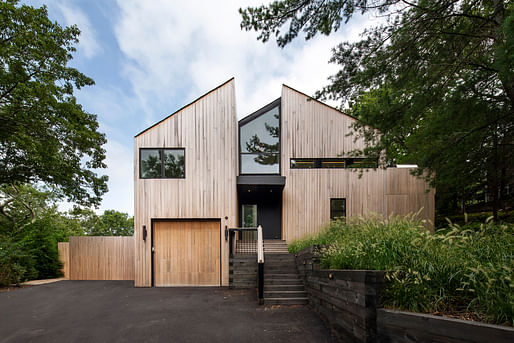
An adaptive reuse project in East Hampton, Oyster Pond was designed to bring natural light deep into the interior while keeping costs low. The team’s response was to carefully remove parts of the exterior while hollowing out the interior to create large light-filled volumes.
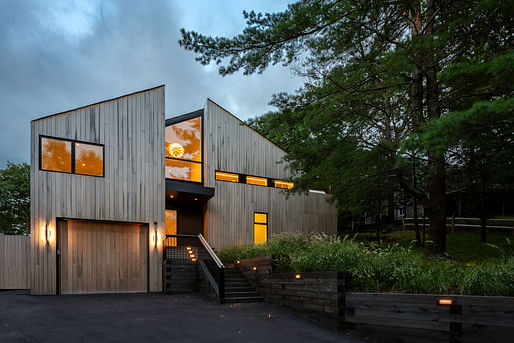
“We recognized in the existing house interesting elements that were worthy of display,” the team explains. “Elements like the rakish roof profile and multiple intermediate levels were already present; They just needed to be refined and honed to activate the volume on the inside and a sense of definition on the outside.”

The Black House project saw the adaptive reuse of a postwar ranch home. The design forms privacy zones that allow for multiple uses within the confines of the small footprint, while the home itself was expanded by a private courtyard, an indoor-outdoor dining space, and an art studio.
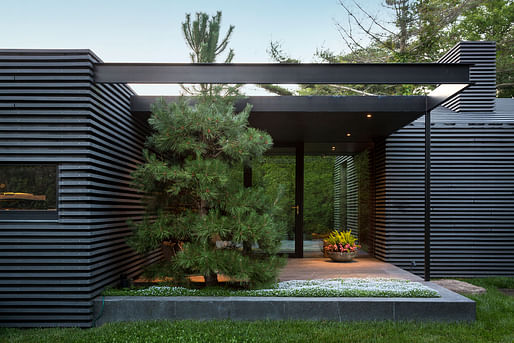
“Inspired by a piece of furniture designed by Ineke Hans for the Danish design group Moooi, the architects developed an exterior skin of black rubber and recycled plastic (80 percent post-consumer),” the team explains. “The rubber serves to seal the existing structure from the elements and the recycled plastic screen forms a protective barrier for the rubber skin while also doubling as a sunshade to mitigate heat gain on the black surface.”
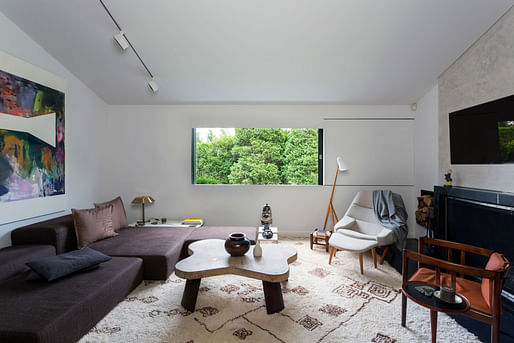
Located on a waterfront parcel in Sag Harbor, Holley House is defined by an orderly form and expressive materials. The home’s material palette includes terrazzo floors, burnt cedar Shou Sugi Ban siding, smooth concrete stucco, and blond-white oak details.
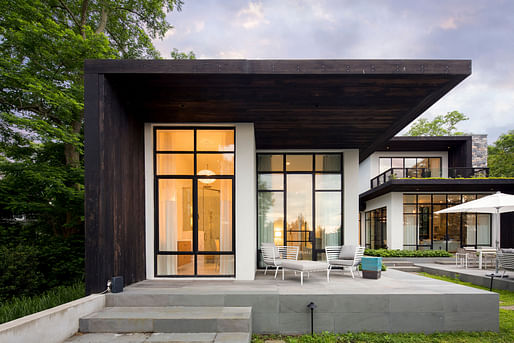
“We moved the master bedroom down to the first floor, and created a separate guesthouse that became known as the raccoon lodge,” the team explains. “Floor to ceiling Steel windows and doors throughout, minimal trim, and a bright palette created the ambiance we were looking for. In the end, the 3000 square foot home house only resembled my own in plan and was inseparable from the individual who was our client. The whole office enjoyed the design process, as the details that made the house seemed to materialize from the energy of our collaboration.”
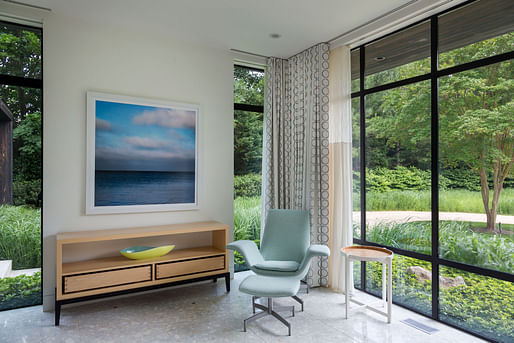
Built on the footprint of a preexisting structure, the Holley Guest House contains a garage and a full-service guest suite. In contrast to the ordered, formal main home, the guest house evokes a more playful industrial feel, with concrete floors and a standing seam metal roof wrapped down the facade.
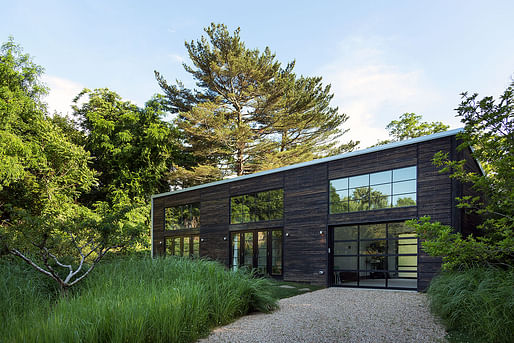
“A Shosugi Ban accent Wall frames the windows and thus the view, while the suspended fire orb fireplace divides the sitting room from the bedroom side of the studio,” the team explains. “A small alcove kitchenette and subway tile bathroom round out the living amenities. The garage side of the guest house has two glass garage doors, one frosted facing the entry, and one clear glass exiting towards the main house. When both are open, it gives the structure the feel of a porte-cochere and lightens its presence on the property.”
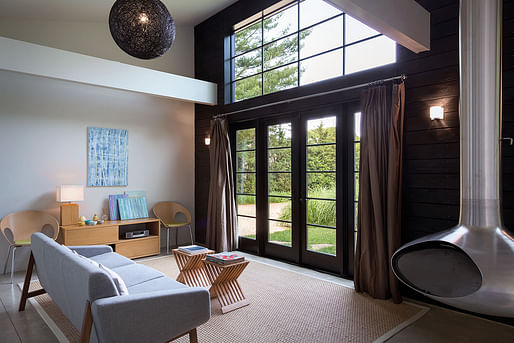
Located in Sagaponack, Seabarn saw the renovation of two fading red barns converted into a warehouse-like live/work space for an artist couple and their family. Inside, the renovated home features original timber girders, clear-coated cedar board walls, a large brick fireplace, steel windows, and an industrial steel stair.

“Following some selective demolition it was revealed that the two barns were connected by an architecturally insignificant structure,” the team explains. “By removing the structure, we created a breezeway. This was done by suspending a ‘mini-barn’ clad in metal shingles within the gap left by the demolition. It serves to divide the personal and professional. Twin garage doors below can open for access to the backyard or close as a heated vestibule connecting the two Barns. One structure functions as the studio, and the other as a three bedroom, three bathroom loft-like apartment.”

Meet Your Next Employer is one of a number of ongoing weekly series showcasing the opportunities available on our industry-leading job board. Our Job Highlights series looks at intriguing and topical employment opportunities currently available on Archinect Jobs, while our weekly roundups curate job opportunities by location, career level, and job description.
No Comments
Block this user
Are you sure you want to block this user and hide all related comments throughout the site?
Archinect
This is your first comment on Archinect. Your comment will be visible once approved.